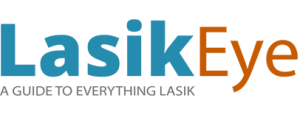An ophthalmoscope is a medical instrument used by eye doctors, such as optometrists and ophthalmologists, to examine the internal structures of the eye, including the retina, optic nerve, and blood vessels. It allows the practitioner to view the inside of the eye and detect any abnormalities or signs of disease, such as macular degeneration, glaucoma, or diabetic retinopathy. The ophthalmoscope can also be used to measure the refractive error and assess the need for corrective lenses.
The ophthalmoscope consists of a light source, a lens system, and a viewing aperture or eyepiece. The light source is usually a halogen or LED bulb that emits a bright, focused beam of light. The lens system includes a series of lenses and filters that focus the light and adjust its intensity and color. The viewing aperture or eyepiece allows the examiner to see through the instrument and into the eye.
To use the ophthalmoscope, the patient sits in a darkened room and focuses on a distant object while the examiner approaches with the instrument. The examiner holds the ophthalmoscope close to the patient’s eye and shines the light into the pupil, which dilates in response to the bright light. The examiner then adjusts the lenses and filters to focus the light on the retina and visualize its structures.
Uses for a Ophthalmoscope
The ophthalmoscope can reveal many important details about the eye, including the condition of the optic nerve, the presence of any retinal tears or holes, and the status of the blood vessels that supply the retina. The examiner can also observe the macula, which is the small area at the center of the retina that is responsible for sharp, detailed vision. Any abnormalities in the macula can indicate conditions such as macular degeneration or diabetic retinopathy.
In addition to diagnosing eye diseases, the ophthalmoscope can also be used to measure the refractive error of the eye and assess the need for corrective lenses. By adjusting the lenses and filters of the instrument, the examiner can determine the strength and type of lenses needed to correct myopia (nearsightedness), hyperopia (farsightedness), or astigmatism.
In summary, the ophthalmoscope is a valuable tool for examining the internal structures of the eye and detecting signs of disease or abnormalities. It allows eye doctors to diagnose and treat a wide range of conditions and provide customized care for each patient’s individual needs. If you are experiencing vision problems or have a family history of eye disease, it is important to schedule regular eye exams with a qualified eye doctor who can use an ophthalmoscope to assess your eye health and help you maintain clear, healthy vision.
